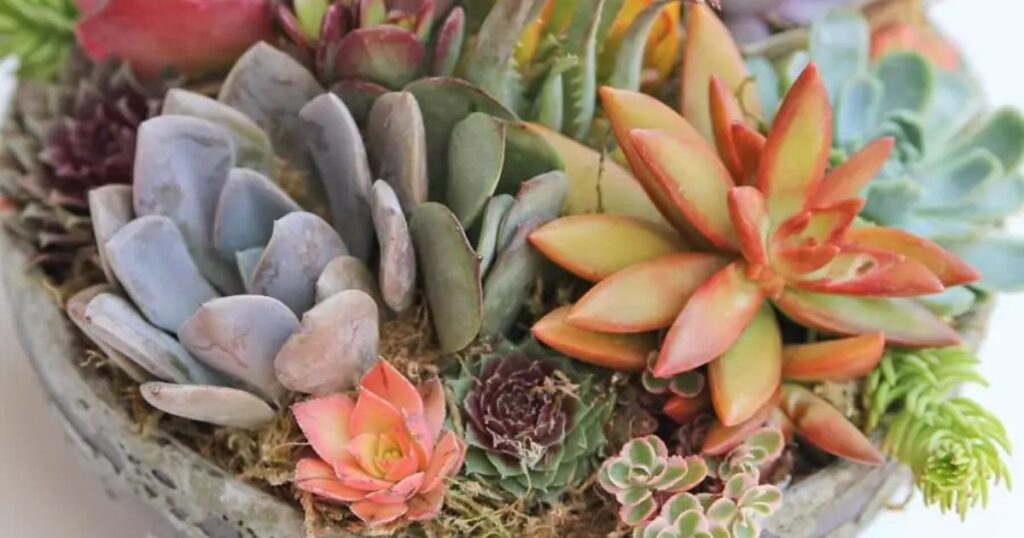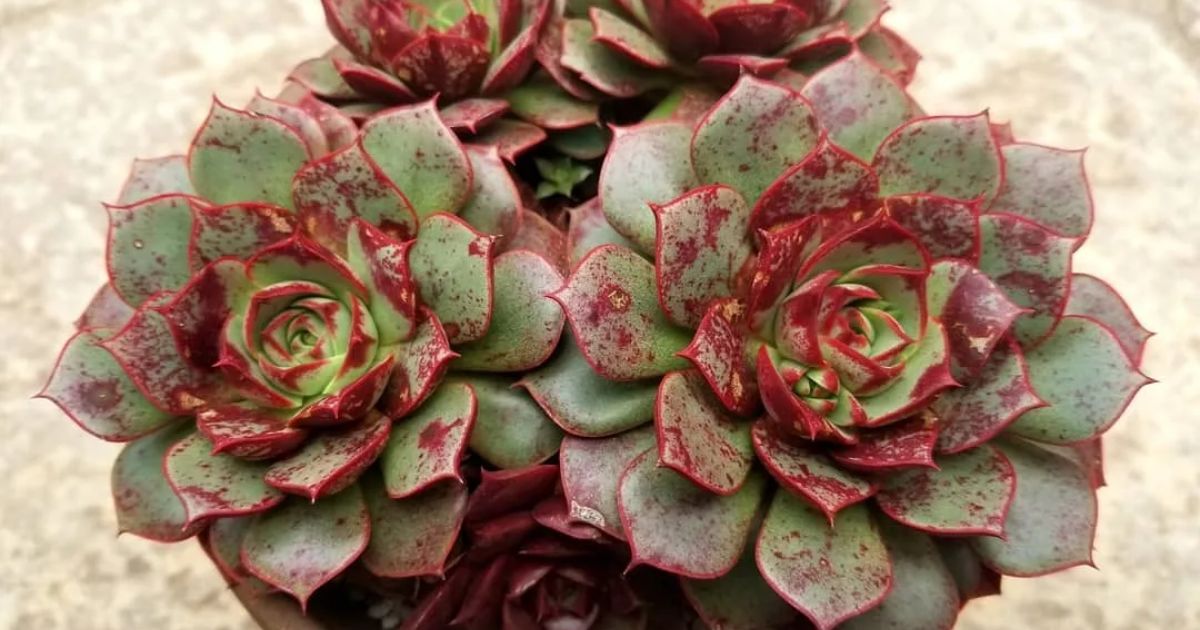Bottom watering succulents involves watering the plants from the bottom rather than the top. In this method, the water is applied directly to the soil at the base of the succulent, allowing the plant to absorb moisture through its roots. This technique is particularly popular among succulent enthusiasts as it helps prevent issues like overwatering and allows the plant to take up water at its own pace.
Should You Bottom Water Succulents? This question arises among plant enthusiasts seeking the most effective way to care for their succulents. As the popularity of succulents continues to grow, so does the curiosity about optimal watering methods.
When it comes to Bottom Water Succulents, it’s essential to consider the specific needs of these resilient plants. Succulents, known for their ability to store water in their leaves and stems, thrive in well-draining soil. Bottom watering complements this natural adaptation by allowing the roots to absorb moisture efficiently.
How Often Should Succulents Be Watered?
Succulents, known for their water-storing capabilities, require a careful balance in watering frequency. Overwatering is a common issue, as succulents prefer well-draining soil. Generally, succulents should be watered every 10-14 days, allowing the soil to dry completely between watering sessions, the frequency can vary based on factors such as climate, season, and the type of succulent.
Determining when to water succulents is a vital aspect of their care. A simple yet effective method is the finger test .Insert your finger into the soil, and if it feels dry up to the first knuckle, it’s time to water. Additionally, observe the appearance of the leaves; if they appear wrinkled or deflated, the succulent may be thirsty. Adjusting the watering schedule based on these cues ensures that your succulents receive the right amount of moisture,
How to Water Succulent Plants

Proper watering techniques are essential for succulent care. When watering, it’s crucial to use a watering can with a narrow spout or a squeeze bottle to control the water flow. Direct the water at the base of the plant, avoiding the leaves to prevent issues like rot. Water until it starts to seep from the drainage holes, ensuring that the entire root ball receives moisture.
If you’re wondering long to bottom water succulents, it’s recommended to allow the water to seep through the soil for a few minutes. This ensures that the roots have sufficient time to absorb the moisture, promoting a thorough and effective watering.
The duration may vary depending on factors such as the size of the pot and the specific succulent species. Observing the flow of water and gauging the soil’s saturation can help you determine the appropriate time needed to bottom water your succulents effectively.
Always empty the saucer beneath the pot to prevent water accumulation. By following these simple steps, you can provide your succulents with the hydration they need without compromising their well-being.
Table: Succulent Watering Guidelines
| Succulent Type | Watering Frequency | Additional Tips |
| Desert Succulents | 10-14 days | Ensure fast-draining soil. |
| Jungle Succulents | 7-10 days | Monitor soil moisture closely. |
| Winter Dormancy | Reduce frequency | Limit watering during dormancy. |
What is Bottom Watering?
Bottom watering is an alternative watering method where water is applied directly to the soil at the base of the succulent. This technique allows the plant to absorb water through its roots, promoting efficient hydration.
It’s especially beneficial for succulents as it helps prevent water settling in the rosettes, reducing the risk of issues like root rot. Bottom watering is a useful approach for those looking to avoid overwatering and provide their succulents with a controlled and consistent water supply.
Water your succulents thoroughly
Proper watering is crucial for the health of your succulents. When watering, ensure that the soil is thoroughly moistened. Water the plants until you see water draining from the bottom of the pot, indicating that the entire root system has received moisture. Succulents prefer a soak-and-dry method, allowing the soil to dry out between watering to prevent issues like root rot.
Overwatering is a common mistake, so it’s important to strike a balance that meets the water needs of your succulents without drowning them.Succulents thrive in well-draining soil, preventing water from pooling around the roots. When watering, use a watering can with a narrow spout or a drip irrigation system to target the base of the plant.
Consider bottom watering your succulents
Should You Bottom Water Succulents? Bottom watering is a technique gaining popularity among succulent enthusiasts. This method involves adding water to the saucer or tray beneath the pot, allowing the plant to absorb water through its roots. Bottom watering can be advantageous as it prevents water from settling in the rosettes of the succulent, reducing the risk of fungal issues.
It also promotes a deep and thorough watering, reaching the entire root system. Before adopting bottom watering, consider the specific needs of your succulents and the type of soil they are planted in. This method is particularly effective for potted succulents with drainage holes. It’s a useful approach for those who may tend to overwater, providing a controlled and measured way for the plant to take up moisture.
How to Do Bottom Watering?
To bottom water your succulents, place the pot in a shallow container filled with water. Allow the soil to absorb water from the bottom for about 20-30 minutes, ensuring thorough hydration. Once the topsoil feels moist, remove the pot from the water and let any excess drain. This method not only prevents water from coming into contact with the leaves but also encourages the roots to grow deeper in search of moisture.
When to Bottom Water Your Succulent?
Bottom watering is particularly useful when the topsoil is dry, and the succulent shows signs of needing water. This method is beneficial during the regular watering schedule, providing an extra layer of hydration without risking overwatering.
Incorporating bottom watering into your routine can be especially advantageous in arid climates or during warmer seasons when succulents may require more frequent watering.Observing your succulents’ moisture needs and adjusting your watering techniques accordingly ensures their optimal growth and vitality.
FAQ’s
Can I Overwater Succulents?
Overwatering is a common issue for succulents, so it’s crucial to let the soil dry completely between watering sessions to avoid root rot.
Is Bottom Watering Suitable for All Succulents?
Bottom watering is generally suitable for most succulents, as it provides a controlled and efficient way for the roots to absorb moisture.
How Can I Tell If My Succulent Needs Water?
Check the soil moisture by inserting your finger; if it feels dry up to the first knuckle, it’s time to water. Also, observe the appearance of the leaves for signs of dehydration.
Should I Adjust Watering Frequency Based on Season?
Yes, adjust watering frequency based on the season. Succulents may need more water during hotter months and less during winter dormancy.
Can I Use Tap Water for Succulents?
While tap water is generally fine, it’s advisable to let it sit for 24 hours to allow chlorine and other chemicals to dissipate before watering succulents.
Conclusion
In caring for your succulents, finding the right watering routine is key to their well-being. Whether you choose to water from the top or opt for the bottom watering method, paying attention to your plants’ needs is crucial. Remember, the goal is to keep the soil well-drained and let it dry between watering sessions.
By understanding how often to water, when to water, and the benefits of techniques like bottom watering, you’re on your way to fostering a healthy environment for your succulents. With these simple practices, you can enjoy the beauty and resilience of these unique plants in your home or garden. Happy succulent growing.










